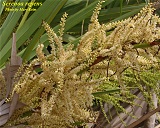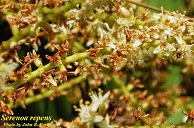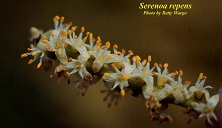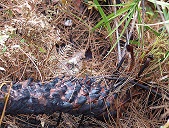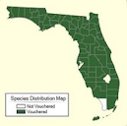| Saw Palmetto - Serenoa repens | |||||||||||||||||
|---|---|---|---|---|---|---|---|---|---|---|---|---|---|---|---|---|---|
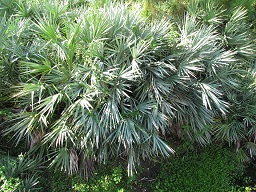 Fig. 1  Serenoa repens (Saw palmetto) habit Green Cay Wetlands Boynton Beach, Florida 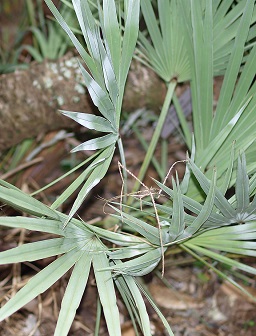 Fig. 2  S. repens blue-green form 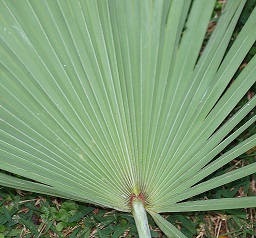 Fig. 3 S. repens blue-green leaf form 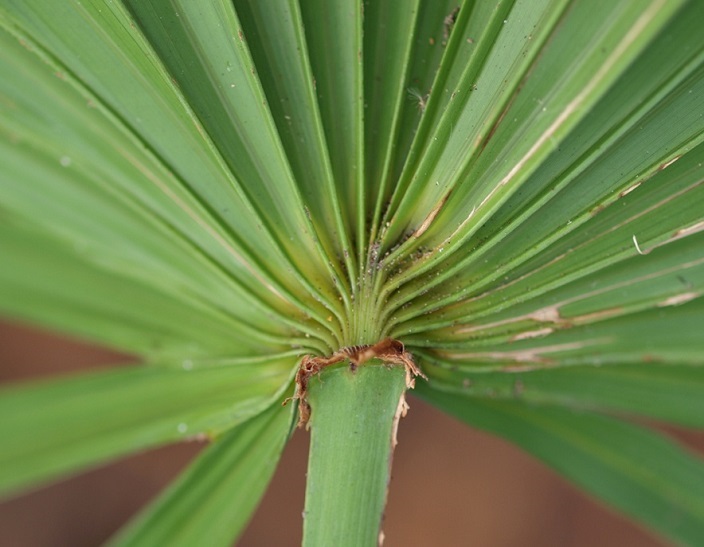 Fig. 4  S. repens adaxial hastula 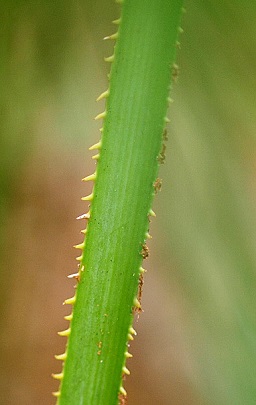 Fig. 5 S. repens "saw" teeth on petiole 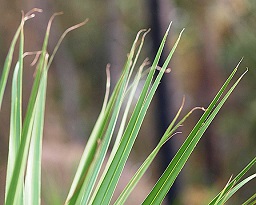 Fig. 6  S. repens leaf segments with bifid tips 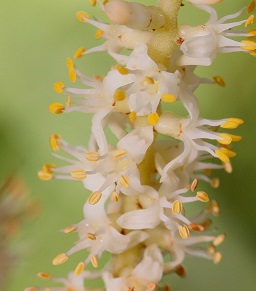 Fig. 7  Saw Palmetto (S. repens) Source of a high-quality honey, which is produced just after the orange blossom flow finishes. 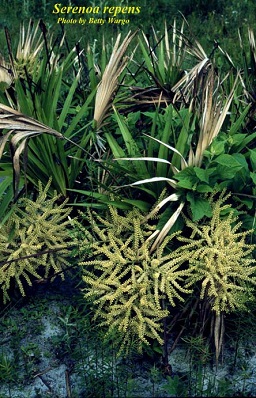 Fig. 8  Inflorescense 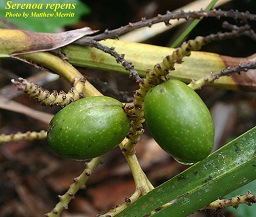 Fig. 14  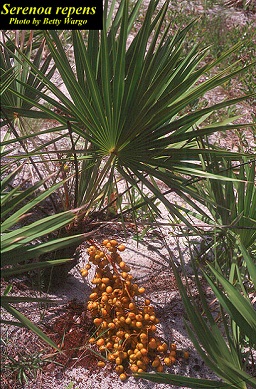 Fig. 15  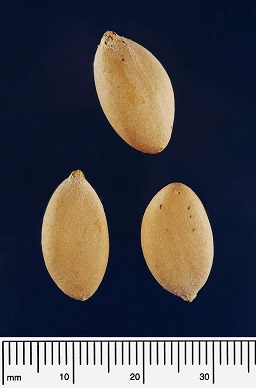 Fig. 16 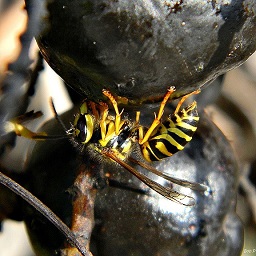 Fig. 17  This Southern Yellow Jacket (Vespula squamosa) is enjoying the beneficial oils that seep from the ripe saw palmetto fruit at Jupiter Ridge Natural Area. Saw palmetto (S. repens) are a wonderland for insect watchers when blooming and again when the fruit ripens. 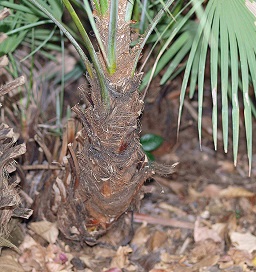 Fig. 18  S. repens with stem growing upright 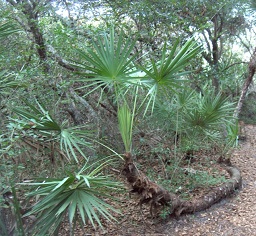 Fig. 19  Saw Palmetto found in Gamble Rogers State Park, Florida, United States 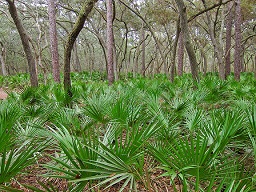 Fig. 20  Saw palmetto (S. repens) in Manatee Springs State Park |
Scientific
name Serenoa repens (W. Bartram) Small Pronunciation Sair-ren-NOE-uh REE-penz 1 Common names English: saw-palmetto, scrub-palmetto; German: Sägezahnpalme, Strauchpalmettopalme; Swedish: sågpalmetto 4; French: Palmier de Floride, Chou palmiste, Sabal; Spanish: Serenoa, Palmito salvaje 9 Synonyms Chamaerops serrulata Michx.; Sabal dealbata hort. ex L. H. Bailey, nom. inval.; S. serrulata (Michx.) Nutt. ex Schult. & Schult. f.; S. serrulata (Michx.) G. Nicholson 4 Family Aracaceae Origin Native to Florida USDA hardiness zones 8-11 Uses Mass planting; specimen; naturalizing; border; reclamation plant; accent; ground cover; attracts butterflies 1 Height 5-10 ft (1.5-3 m) 1 Spread 4-10 ft (1.2-3 m) 1 Plant habit Clumping, underground or creeping stems 2-6.5 ft (0.5-2 m tall) rarely growing upright 20-25 ft ( 6.0-7.5 m tall) 5 Growth rate Slow Longevity Long lived, with some plants possibly being as old as 500–700 years 9 Trunk/bark/branches Showy; typically multi-trunked or clumping stems 1 Leaves Palmate; simple; star shaped; evergreen; silver/gray; blue or blue-green; more than 36 in. (91.5 cm) 1 Flowers Yellow-white; spring flowering; pleasant fragrance 1 Fruit Oval; fleshy; black; 0.5-1 in. (1-2.5) 1 Season Summer to fall 2 Light requirement Part shade/part sun; shade 1 Soil tolerances Alkaline; clay; sand; acidic; loam 1 pH preference 4.5-7.5 2 Drought tolerance High 1 Soil salt tolerance Good 1 Cold tolerance Tolerates down to about 10 °F (-12 °C) for short periods 9 Plant spacing 30-36 in. (76-81 cm) Roots Usually not a problem 1 Invasive potential * Aggressive, spreading plant 1 Pest resistance No serious pests are normally seen on the plant 1 Known hazard None Reading Material Serenoa repens Saw Palmetto, University of Florida pdf (Archived) Saw Palmetto, Serenoa repens (Bartram) Small, USDA Natural Resources Conservation Service pdf Saw Palmetto Harvesting Requirements, Florida Department of Agriculture and Consumer Services pdf Serenoa Repens: Weed to Wonder Drug, Eat The Weeds Commercially Exploited Plant List After receiving input from public and private landowners, conservation interests, and other interested parties, the Endangered Plant Advisory Council unanimously recommended adding saw palmetto to the Department’s commercially exploited plant list. The recommendation was adopted by Department rule which results in new requirements for the harvesting of saw palmetto berries. These new requirements took effect July 17, 2018. 6 According to the agency, widespread gathering of these berries is depleting a wildlife food source and threatening the stability of some ecosystems. 7 Saw Palmetto Berry Harvesting, Florida Department of Agriculture and Consumer Services ext. link Origin S. repens, saw palmetto, is endemic to coastal plains from South Carolina to southeastern Louisiana including the Florida peninsula. Saw palmetto occurs in every county of Florida. It is common throughout the Indian River Lagoon area in both scrub and upland communities. 8 Description Ecologically, saw palmetto is labeled a “keystone species” in southeastern, and particularly Florida ecosystems (Carrington and Mullahey 2006). Over 100 animal species use saw palmetto for nesting, foraging, or for cover (Maehr and Layne 1996). 3 Two vegetative forms are recognized. The common type is yellow-green in color, while the less common type is a blue-green color sometimes referred to as the silver form (Essig et al. 2000). This type occurs in a continuous stretch in a narrow belt along Florida's east coast from St. John's to Dade Counties, and occasionally inland in Polk and Highlands Counties (Essig et al. 2000). 8 Leaves Old leaf bases persistent, with leaf sheaths disintegrating over time into reddish-brown fibers. Petioles armed with sharp teeth along the margins, especially toward the base. Hastula papery; adaxial hastula rounded to deltoid; abaxial, semicircular and often split into two lobes. Palmate leaves, sometimes twisted with slight folds, as if the leaf blade were too large for the petiole. Leaf segments are rigid, divided into segments with split tips. Leaves are usually yellowish green, but a blue-green form is occasionally found. 5 Three to seven leaves are produced each year, and these may remain on the tree for as long as 2 years. 8 Stems Many-branched, usually sprawling parallel to the soil surface, eventually branching beneath the substrate to form rhizomes. In some populations, it develops an erect or oblique, or arching trunk that may lift the whorl of leaves up to 23 ft (7 m) above ground. 9 Flowers and fruits Inflorescences, branched, shorter than the leaves, with fragrant, bee-attracting, perfect, white to pale-yellow flowers. When ripe, fruits are ovoid, blue-black drupes to 2.5 cm long, with a rancid odor. 5
Varieties The variety sericea, silver palmetto, is recognized by some authorities and has beautiful silver leaves. 1 Harvesting New requirements for the harvesting of saw palmetto berries took effect July 17, 2018. A permit is required for the landowner harvesting for sale as well as well as for contract harvesters. Property Owner Sample permit, Florida Department of Agriculture and Consumer Services pdf Harvester Sample permit, Florida Department of Agriculture and Consumer Services pdf Pollination
Fig. 13. S. repens and bee, Miami, Florida, USA Propagation Saw palmetto grows vegetatively from horizontal stems and rhizomes. Sexual reproduction occurs via seeds. Seedlings grow slowly, with plants becoming fully established after three to six years. 8 Can be propagated by bare roots. 4 Regrowth after burning S. repens is especially resistant to fire even though its foliage is highly flammable. It is a frequent invader to sites defoliated by previous fires (Abrahamson 1984b), and is classified as a survivor species due to its ability to resprout from rootcrowns and rhizomes following a fire. Leaf production following fire is initiated by using carbohydrates stored in rhizomes to increase stem density and production. Its fire response is so strong, that even if burned during the winter dormant season, S. repens will produce leaves and fruit out of season. S. repens recovers from fire very quickly, with cover returning to pre-burn levels within a year (Hilmon 1969; Abrahamson 1984a). 8
Fig. 21. S. repen, resprout after burn Fig. 22. S. repens with creeping stem after a recent fire Food Uses Fruits raw or dried, heart raw or cooked. Crown end of growing leaf, trail side nibble. The seeds are edible raw or cooked but is an acquired taste. 10 The terminal buds of the growing trunks contain heart of palm just like the cabbage palm does except it’s smaller. Taking it from the saw palmetto does not kill the many-trunked palm. The growing bottom ends of young fronds are also edible, after one carefully pulls them out. 10 Medicinal Properties ** Of significant importance is a drug called Serenoa, marketed as Permixon, which is extracted from partially ripened, dried fruits of saw palmetto. This drug has been successfully used to treat, prostrate swelling, bladder infections and urinary tract infections. In prostate disorders, extracted Serenoa repens compounds inhibit the enzymes responsible for conversion of the male hormone testosterone to DHT, dihydrotestosterone, a hormone that binds to receptor sites on prostate cells, and adversely affects gene transcription and the regulation of biological responses in these cells (Plosker and Brogden 1996). In urinary tract disorders, treatment of men with S. repens compounds helped reduce urinary frequency, increase urinary flow, and improve symptoms of dysuria (painful urination). 8 Other Uses It is a common understory shrub in coastal strands and in oak-pine communities. In scrub communities, saw palmetto provides habitat for sand skinks, the Florida mouse, and the threatened Florida scrub jay (Austin 1976). Its fruit provides food for black bear and white-tailed deer. In upland communities such as palmetto prairies, saw palmetto is primary habitat for burrowing owls, caracaras and sandhill cranes (Callahan et al. 1990). 8 Seminole Indians still make their dolls out of 100 saw palmetto fiber. It stems provide a good cork substitute, the root pulp was used to plug WWII ammunition, and the root makes a natural scrub brush. 10 General Homeowners should make an effort to leave native stands in place beneath existing trees when developing a new lot since they require no maintenance. 1
Fig. 23. Saw Palmetto distribution map, wild populations Saw Palmetto (Serenoa repens), Berry Harvesting FAQs pdf List of Growers and Vendors |
||||||||||||||||
| Bibliography 1 Gilman, Edward F. "Serenoa repens Saw Palmetto." Environmental Horticulture Dept., UF/IFAS Extension, FPS-547, Original pub. October 1999, Reviewed February 2014, Archived, AskIFAS, edis.ifas.ufl.edu/fp547. Accessed 18 Aug. 2018, 5 Jan. 2024. 2 "Serenoa repens (W. Bartram) Small." USDA, NRCS, The PLANTS Database, National Plant Data Team, Greensboro, NC 27401-4901 USA, 2017, plants.sc.egov.usda.gov/java/charProfile?symbol=SERE2. Accessed 18 Aug. 2018. 3 "Saw Palmetto, Serenoa repens (Bartram) Small." USDA NRCS National Plants Data, Team, Davis, California and the Mississippi Choctaw, Tribal Field Office Choctaw, Mississippi, Dec. 2012, plants.usda.gov/core/profile?symbol=SERE2. Accessed 18 Aug. 2018. 4 "Taxon: Serenoa repens (W. Bartram) Small." U.S. National Plant Germpllasm System, npgsweb.ars-grin.gov/gringlobal/taxonomydetail.aspx?id=103108. Accessed 18 Aug. 2018. 5 Anderson, P. J. "Serenoa repens." Identifying Commonly Cultivated Palms, A Resource for Pests and Diseases of Cultivated Palms, Florida Dept. of Agriculture and Consumer Service, Division of Plant Industry and Identification Technology Program, CPHST, PPQ, APHIS, USDA; Fort Collins, CO, 2011, idtools.org/id/palms/palmid/factsheet.php?name=Serenoa+repens. Accessed 19 Aug. 2018. 6 Saw Palmetto Harvest Fact Sheet, Florida Dept. of Agriculture and Consumer Services, 07/11/2018, www.freshFromFlorida.com/Divisions-Offices/Plant-Industry/Business-Services/Plant-Pest-Permits/Native-Plant-Harvesting-Permit /Saw-Palmetto-Berry-Harvesting. Accessed 21 Aug. 2018. 7 "New Saw Palmetto Berry Harvesting Rule." Florida Farm Bureau, FloridAgriculture e-News, July 2018, www.floridafarmbureau.org/new-saw-palmetto-berry-harvesting-rule/. Accessed 19 Aug. 2018. 8 Hill, K. "Serenoa repens." Smithsonian Marine Station at fort Pierce, Last updated: Oct. 22, 2001, www.sms.si.edu/irlspec/Sereno_repens.htm. Accessed 20 Aug. 2018. 9 "Serenoa repens (W. Bartram) Small." The Encyclopedia of Palms and Cycads, LLifle, www.llifle.com/Encyclopedia/PALMS_AND_CYCADS/Family/Arecaceae/24688/Serenoa_repens. Accessed 20 Aug. 2018. 10 Deane, Green. "Serenoa repens: Weed to Wonder Drug." Eat the Weeds and other things, too. www.eattheweeds.com/?s=saw+palmetto. Accessed 20 Aug. 2018. Photographs Fig. 1 Starr, Forest, and Kim. "Serenoa repens (Saw palmetto), Habit, Green Cay Wetlands Boynton Beach, Florida." Starr Environmental, Sept. 25, 2009, (CC BY 4.0), starrenvironmental.com/images/image/?q=24679706140. Accessed 19 Aug. 2018. Fig. 2,3,4,5,6,16,18,22 Anderson, P. J. "Serenoa repens." Identifying Commonly Cultivated Palms, A Resource for Pests and Diseases of Cultivated Palms, idtools.org/id/palms/palmid/factsheet.php?name=Serenoa+repens. Accessed 19 Aug. 2018. Fig. 7 Manners, Malcolm. "Saw Palmetto (Serenoa repens)." Flickr, Apr. 10, 2008, (CC BY 2.0), www.flickr.com/photos/mmmavocado/2404031533/in/photolist-4yP4tq-9RJ2zg-9RJ2yc-4ErhPx-9RLWo7-4H1WiG. Accessed 19 Aug. 2018. Fig. 8,11,15 Wargo, Betty. "Serenoa repens." USF Herbarium Slide Collection, www.florida.plantatlas.usf.edu/Photo.aspx?id=1920. Accessed 19 Aug. 2018. Fig. 9 Keim, Mary. "Serenoa repens." USF Herbarium Slide Collection, www.florida.plantatlas.usf.edu/Photo.aspx?id=1920. Accessed 19 Aug. 2018. Fig. 10 Park John R. "Serenoa repens." USF Herbarium Slide Collection, www.florida.plantatlas.usf.edu/Photo.aspx?id=1920. Accessed 19 Aug. 2018. Fig. 12 Foster, Suzanne. "Image of Serenoa repens." USDA-NRCS PLANTS Database, 2009-04-21 UTC, Public Domain, eol.org/data_objects/1394523. Accessed 19 Aug. 2018. Fig. 13 Zona, Scott. "Serenoa repens and bee, Miami, Florida, USA." Wikimedia Commons, 28 April 2011, (CC BY 2.0), commons.wikimedia.org/wiki/File:Serenoa_repens_and_bee_(Scott_Zona)_2.jpg. Accessed 19 Aug. 2018. Fig. 14 Merritt, Matthew. "Serenoa repens." USF Herbarium Slide Collection, www.florida.plantatlas.usf.edu/Photo.aspx?id=1920. Accessed 19 Aug. 2018. Fig. 17 Peterson, Bob. "This Southern Yellow Jacket (Vespula squamosa) is enjoying the beneficial oils that seep from the ripe saw palmetto fruit at Jupiter Ridge Natural Area. Saw palmetto (Serenoa repens) are a wonderland for insect watchers when blooming and again when the fruit ripens." Wikimedia Commons, 10 Sept. 2011, (CC BY-SA 2.0), commons.wikimedia.org/wiki/File:Yellow_Jacket_&_Palmetto_Treat_(6139259793).jpg. Accessed 19 Aug. 2018. Fig. 19 Price, Homer Edward. "Saw Palmetto found in Gamble Rogers State Park, Florida, United State." Encyclopedia of Life, 2015-04-30 UTC, (CC BY 2.0), eol.org/data_objects/29205372. Accessed 19 Aug. 2018. Fig. 20 Vieira, Miguel. "Saw palmetto Serenoa repens in forest in Manatee Springs State Park." Wikimedia Commons, 10 Jan.2012, (CC BY 2.0), commons.wikimedia.org/wiki/File:Saw_palmetto_(Serenoa_repens)_in_Manatee_Springs_State_Park.jpg. Accessed 120 Aug. 2018. Fig. 21 Sharp, Jason. "Serenoa repens; resprout after burn, Boyd Hill Nature Preserve, Pinellas County, Florida ,United States." Encyclopedia of Life, 2012-04-01, 2015-05-20, 2013-06-13, 2012-05-16 UTC, (CC BY-NC-SA 2.0), eol.org/data_objects/24909163. Accessed 19 Aug. 2018. Fig. 23 Wunderlin, R., et al. "Serenoa repens, Species Distribution Map." Atlas of Florida Plants, [S. M. Landry and K. N. Campbell (application development), USF Water Institute.] Institute for Systematic Botany, University of South Florida, Tampa, 2017, www.florida.plantatlas.usf.edu/Plant.aspx?id=2664. Accessed 19 Aug. 2018. * UF/IFAS Assessment of Non-native Plants in Florida's Natural Areas ** Information provided is not intended to be used as a guide for treatment of medical conditions. Published 21 Aug. 2018 LR. Last update 5 Jan. 2024 LR |
|||||||||||||||||
